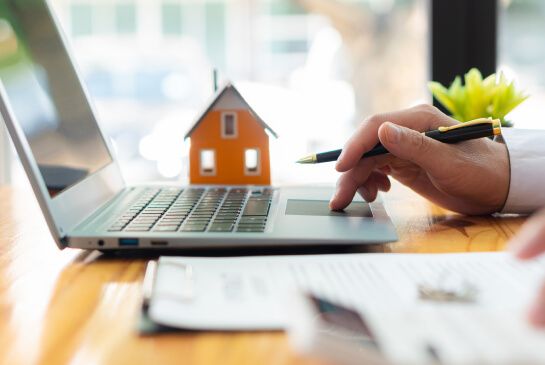Stamp Duty Guide
What is this tax and how much will you be expected to pay?

If you’re buying a home, one of the additional costs you need to budget for is Stamp Duty. But just what is this particular tax and how much will you be expected to pay?
To help demystify this tax, we’ve put together this guide to break down everything you need to know about Stamp Duty for residential properties. From basic definitions through to Stamp Duty on second homes, we’ve got you covered.
What is Stamp Duty?
Stamp Duty — or Stamp Duty Land Tax, to give it its full name — is a payment you have to make to HM Revenue and Customs (HMRC) when buying a piece of land or residential property for over £250,000.
If your property costs more than £250,000, you’ll pay Stamp Duty, unless you’re a first-time buyer. This tax is applicable to both leasehold properties and freehold, no matter if you’re buying outright or with a mortgage.
If you’re a first-time buyer, you won’t pay Stamp Duty on properties costing up to £425,000. You’ll also be eligible for a discounted Stamp Duty tax rate on property purchases up to £625,000.
These discounts are currently set to end on 31st March 2025.
Please note: Stamp Duty is applicable in England and Northern Ireland only, and most sections here will address this tax. Both Scotland and Wales have their own rules, which we’ll cover later in the guide.
Who pays Stamp Duty?
It’s simple — the home buyer pays Stamp Duty, never the seller. As part of the process and to help ease the transition, your solicitor will usually pay this tax on your behalf, though it is possible to do it yourself.
Remember: If the property you’re purchasing is worth £250,000 or less, you don’t have to pay Stamp Duty. And, if you’re a first-time buyer, you won’t be expected to pay Stamp Duty on homes worth under £425,000.
When do you pay Stamp Duty?
Once you’ve purchased your property, you’ll then be granted 14 days to pay Stamp Duty and file a return form to HMRC. Usually, your conveyancer or solicitor will help you by calculating and processing the payment on your behalf on completion day. Be prepared to supply your solicitor with the full sum in advance.
How much is Stamp Duty?
How much Stamp Duty you pay depends on the value of the property you’re buying. There are several rate bands, and tax is calculated on the portion of the price that falls within each band.
Here are the Stamp Duty tax rate bands for residential properties:
| Value of property | Stamp Duty |
|---|---|
| £0–£250,000 | 0% |
| £250,001–£925,000 | 5% |
| £925,001–£1.5 million | 10% |
| Over £1.5 million | 12% |
If you’re buying a second home, there is an additional 3% to pay on top of these rates. There are also different rules for first time buyers. We’ll look at both of these in more detail later in the guide.
Please note: These rates are correct at the time of writing — please visit HMRC’s site here for the latest rates.
How do you calculate Stamp Duty?
If your new home’s value exceeds £250,000, you will pay Stamp Duty at a certain rate for each part of the price that sits within each of the bands in the table above.
This is very much like Income Tax, where you get a portion of your income tax free, but then have to pay tax on the parts that fall into each Income Tax band.
For example, if the price of your home is £550,000, you’ll be expected to pay:
- 0% on the first £250,000 = £0
- 5% on the next £300,000 = £15,000
- Total Stamp Duty paid = £15,000
Here are a few more examples:
How much is Stamp Duty on a £300k property?
- 0% on the first £250,000 = £0
- 5% on the next £50,000 = £2,500
- Total Stamp Duty sum = £2,500
How much is Stamp Duty on a £400k property?
- 0% on the first £250,000 = £0
- 5% on the next £150,000 = £7,500
- Total Stamp Duty sum = £7,500
How much is Stamp Duty on a £500k property?
- 0% on the first £250,000 = £0
- 5% on the next £250,000 = £12,500
- Total Stamp Duty sum = £12,500
How much is Stamp Duty on a £1m property?
- 0% on the first £250,000 = £0
- 5% on the next £675,000 = £33,750
- 10% on the next £75,000 = £7,500
- Total Stamp Duty sum = £41,250
Stamp duty for first time buyers
What’s the difference for first-time buyers when it comes to Stamp Duty tax? Well, in England and Northern Ireland, you pay absolutely nothing for the first £425,000.
However, for homes costing up to £625,000, you’ll need to pay 5% tax on the portion that exceeds the initial £425,000. Additionally, if your property exceeds £625,000, you won’t be eligible for first-time buyer relief.
Please note: Everyone buying a property has to be a first-time buyer to qualify for relief. This means that if you’re buying with a partner, you’ll need to pay regular Stamp Duty if either of you has owned a home before.
How much is Stamp Duty on a second home?
If you’re purchasing a second home in addition to your current property, then you may have to pay an additional 3% on top of the standard Stamp Duty rate. This only applies to homes bought for £40,000 or more.
This means the Stamp Duty rate bands for a second home over £40,000 are:
| Value of property | Stamp Duty |
|---|---|
| £0–£250,000 | 3% |
| £250,001–£925,000 | 8% |
| £925,001–£1.5 million | 13% |
| Over £1.5 million | 15% |
Please note: These rates are correct at the time of writing — please visit HMRC’s site here for the latest rates.
What counts as a second home?
If you’re unsure if a property counts as a second home, it’s worth remembering that a second home is any property you purchase beyond the one you already own, even a buy to let property, holiday home or property bought as a family gift. You’ll even have to pay an additional rate of Stamp Duty if you buy a home abroad if it costs more than £40,000.
Please note: Caravans, mobile homes and houseboats don’t count as second homes.
Stamp Duty in Scotland
Unlike England and Northern Ireland, Stamp Duty Land Tax was abolished in Scotland in 2012. However, tax on new properties still applies and is known as Land and Building Transaction Tax (LBTT). These rules were introduced from April 2015, replacing the previous provisional rules that were in place from 2012–2015.
Much like Stamp Duty, LBTT is a tiered tax and relies on the price of the property. As a standard, LBTT is higher in Scotland than Stamp Duty tax is in England and Northern Ireland.
Here are the rates you’ll need to pay if you live in Scotland:
| Value of property | LBTT normal rate |
|---|---|
| Less than £145,000 | 0% |
| £145,000 to £250,000 | 2% |
| £250,000 to £325,000 | 5% |
| £325,000 to £750,000 | 10% |
| Over £750,000 | 12% |
Please note: These rates are correct at the time of writing — please visit Revenue Scotland’s site here for the latest rates.
Stamp Duty in Wales
Much like Scotland, things are a little different in Wales when it comes to Stamp Duty. It’s referred to as Land Transaction Tax. Similarly to Scotland, the bands are different from Stamp Duty rates and, unfortunately, there is no leeway for first-time buyers. However, they are still tiered.
Here are the rates you’ll need to pay if you live in Wales:
| Value of property | LBTT normal rate |
|---|---|
| Up to £225,000 | 0% |
| £225,001 - £400,000 | 6% |
| £400,001 - £750,000 | 7.5% |
| £750,001 - £1,500,000 | 14% |
| £1,500,001 + | 16% |
Please note: These rates are correct at the time of writing — please visit the Welsh government site here for the latest rates.
Stamp Duty in Northern Ireland
This one is pretty straightforward: Northern Ireland has the same Stamp Duty rates and rules as England.
2020-2021 Stamp Duty holidays
Initially introduced in July 2020, the Stamp Duty holiday was implemented to help relieve the UK property market during the COVID-19 pandemic. Put simply, it meant that buyers purchasing properties for less than £500,000 didn’t have to pay any Stamp Duty tax. This boost was then extended until 30th June 2021.
Then, from the 1st of July to the 30th of September, Stamp Duty tax was payable on the cost of homes above £250,000. Following that, from the 1st of October 2021, the holiday ended and Stamp Duty tax rates reverted back to pre-holiday rates. For more information on how it all played out, read our blog post.
We hope this guide fills you in on everything you need to know about Stamp Duty. If you have any other burning mortgage questions, be sure to visit our mortgage knowledge hub or blog.
And, if you’re ready to apply for a mortgage, you may be interested in our range of mortgage products, including mortgages for first-time buyers, home movers and those with less-than-perfect credit.
You may also like
16 tips for moving house
Read our step-by-step guide to moving house. From costs, paperwork and contracts, we’ve got you covered for a stress-free move.

